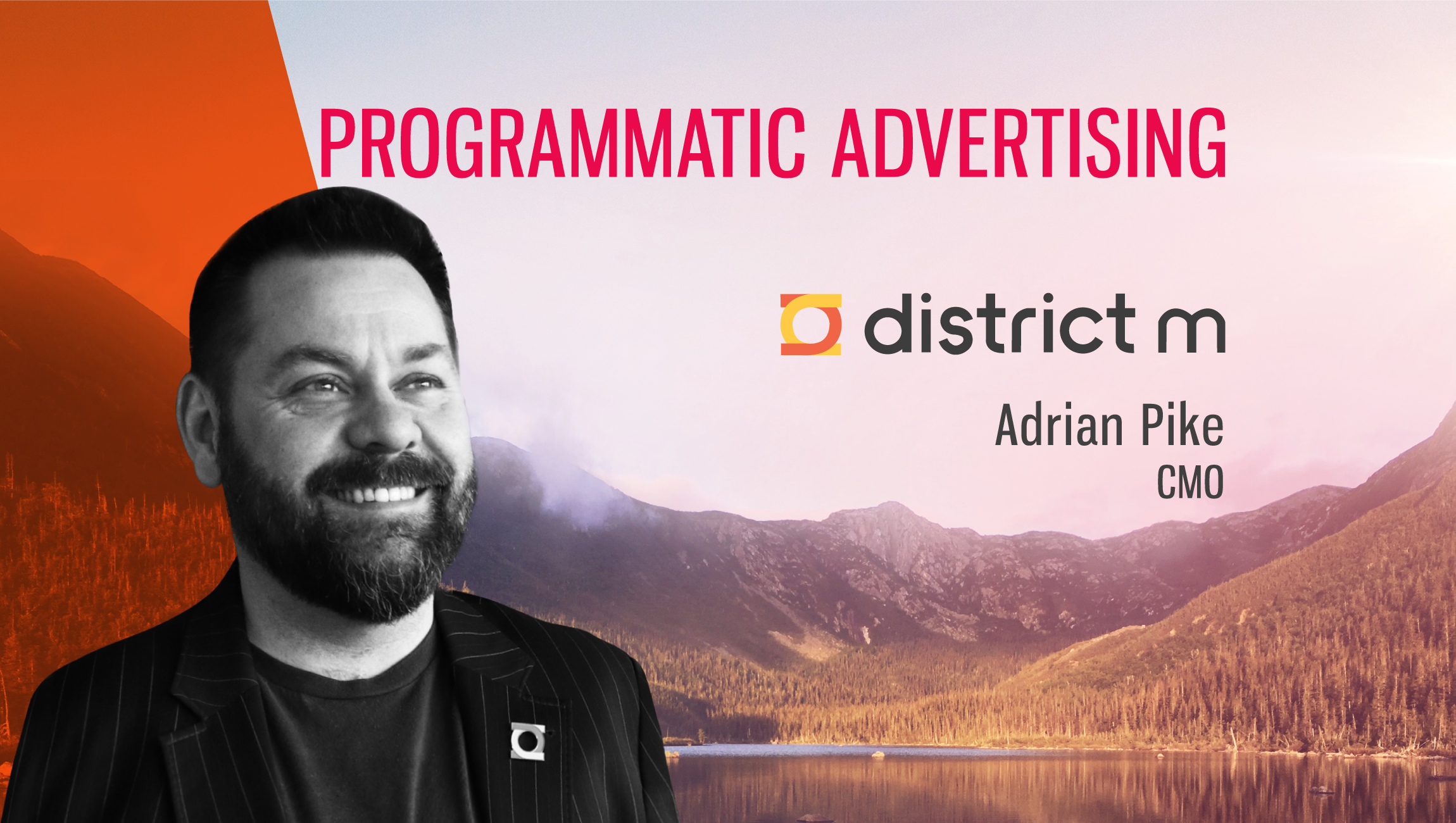Adrian Pike
Chief Marketing Officer at District M
district m receives 10 billion ad requests a day and this generates enormous amounts of data. In this context, we spoke to Adrian Pike, Chief Marketing Officer at district m, to understand what technologies in AI/Machine Learning are being deployed to make the AdTech platform more revenue-centric.
Html code here! Replace this with any non empty text and that's it.
Tell us about your role at district m and the team/technology you handle.
As CMO, my role includes all aspects of marketing, from brand awareness to demand generation for district m and all its products.
What are the core tenets of your programmatic AdTech suite?
The core of our AdTech suite can be summed up to our three platforms, each of them servicing a specific audience. “boost” is our inventory monetization platform for publishers, “CAMP” offers an extensive reporting suite for advertisers to optimize their campaigns and, our newcomer, “go,” is a self-serve platform designed to help SMBs leverage the power of digital advertising.
How does your recent launch, go, enable SMBs to leverage the full power of digital advertising?
go was launched last year under the name mypixel as a retargeting platform only. Retargeting has proven to be highly effective in generating growth for businesses of any size and the ROI is always worth the investment. However, for retargeting to work to its full potential, websites need to have a steady flow of visitors coming through. That’s where go is different. The platform helps entrepreneur work on two fronts: on one side, we’ve integrated two powerful prospecting technologies, display advertising and search marketing, to help them generate that traffic.
On the other side, the retargeting feature that was used in mypixel is still there to help users re-engage with their visitors, increasing their chances of conversion by over 70%. The last key ingredient to the mix is providing all those services in one, easy-to-use platform. Small businesses don’t have time to learn yet another platform, so we made sure ours could be used as effortlessly as possible.
Tell us about your preventive measures against ad fraud and non-viewability?
Ad fraud and viewability are challenges that are very much present in our industry and we keep that in mind through every step while developing our products.
We have several technologies that we work with to prevent ad fraud. Through key indicators such as the analysis of click areas or the number of impressions and clicks made on a single device, we are able to identify websites that may be subject to fraud and blacklist those. We are also investing in Machine Learning to improve those technologies and allow us to detect and eliminate fraud much quicker.
As for viewability, developing our own interactive formats has helped us a lot in tracking viewability. With formats like touch, swipe or reveal, we can track the engagement rate those banners register and thus provide more reliable data on viewability. Several metrics will be included in our latest iteration of CAMP, which will enable our advertisers to get more clarity on the viewability of their ads.
What technologies in AI/Machine Learning are you deploying to make AdTech platform more revenue-centric?
district m receives 10 billion ad requests a day and this generates enormous amounts of data. Obviously, this is too much data for one human to crunch through. Even if that was possible, there are certain partners that could not even be detected by the human brain, but that are immensely valuable for optimization purposes. We use predictive models, which take that data to build different profiles based on goals and KPIs and then use those profiles to make out patterns that will later help optimize the overall media buying process, thus offering better ROI for advertisers.
Which monetization solutions do you provide to bring in incremental revenue?
We have various ways of bringing in incremental revenue for our publishers, mainly through our header bidding solution and our exclusive formats.
Header bidding is our most popular and effective product. Combined with our own algorithms, which allow us to aggregate and prioritize demand sources, our header bidding solution can maximize revenue for publishers.
As for the formats, we develop unique formats on both the publisher and advertiser side, so that once implemented on the publisher’s site, we can push through our own demand for those formats, which have historically generated higher CPMs.
What does your product roadmap look like for 2018-2022?
If there is one thing that has become increasingly important in the AdTech industry, it’s the consumer’s experience. Our industry has spent decades overlooking it as a vital component of success. This will be a key focus in our upcoming developments, whether that means developing more non-intrusive ad formats or technologies to allow for more precise targeting and thus, improve relevance for the user.
go will also see some major developments, and integrate more features to helps SMBs take their digital advertising capacities further.
Thanks for chatting with us, Adrian.
Stay tuned for more insights on marketing technologies. To participate in our Tech Bytes program, email us at news@martechseries-67ee47.ingress-bonde.easywp.com











